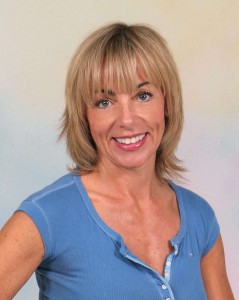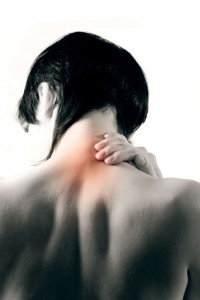Health & Fitness
A Pain in the Neck
by Cheryl Alker
If you were drawn to reading this article, then you are more than likely to be one of the 31 million Americans today suffering with back, neck and shoulder pain. You have probably had to miss work at least once as a result of the pain and you are a regular visitor to the doctor, chiropractor or therapist. You are also contributing to the staggering $50 billion that is spent each year on back pain – and that is just for the more easily identified costs. You are also probably taking some form of pain relief and you know you should be exercising but the lack of mobility and pain make it almost impossible to take part in a regular program.
How about this statistic though?
Most cases of back pain are mechanical or non-organic, meaning they are not caused by conditions such as inflammatory arthritis, infection, fracture or cancer.
So what is the number one cause of so much pain?
SHORT, TIGHT MUSCLES – the majority of people’s back problems are a direct result of poor postural alignment.
It is that simple – the fact is that when muscles become short and tight they draw bones closer together resulting in poor joint mobility, pain and discomfort. Tight muscles will literally hold your body in a restricted position. When a joint is immobile it loses much of its natural lubrication (synovial fluid) that is produced as a result of movement.
Tight muscles = poor mobility = pain and discomfort.
Pain and discomfort = poor mobility = even tighter muscles.
It really is a vicious circle!
Today’s lifestyle, for the majority of us, means that we sit for hours each day, week after week, month after month and year after year. This position will eventually force the body out of alignment, leading to lower and upper back problems, lack of energy, a collapsed ribcage, loss of waistline, loss of abdominal support, shoulders rolling forward and the head sitting in an incorrect position – Phew!
Let me give you an example:-
We have a muscle called iliopsoas, it is our hip flexor muscle and is responsible for hip flexion i.e. lifting the leg to climb stairs. Sitting for long periods will shorten this muscle. Our muscles are attached to bone and originate in one area (the origin) and insert into another area (insertion). Iliopsoas originates at the vertebrae in our lumbar (lower) region of our spine, it threads through our pelvis and attaches to our femur bone on the front of our leg. Now when this muscle is short and tight it will draw the pelvis into a posterior tilt i.e. your bottom will tilt backwards and the lower curve of your spine will deepen forcing your abdominals out. When your pelvis is being held in this restricted position day in day out the vertebrae in your lower back will be compressed causing the surrounding muscles to tighten causing pain and poor mobility in this area. Over time the gel within the discs will start to bulge causing herniation/slipped discs. Now you really are in pain!
If you regularly stretch iliopsoas, once released, the muscle will allow the pelvis to sit in a more neutral position. You will regain mobility within your pelvis, the gel within the discs will be massaged evenly around the disc and your abdominals will pull in. So not only will you be pain free you will have a flatter abdomen!
You should introduce a pure stretch program that focuses on lengthening and elongating the muscles that affect postural alignment. As a result you will return to a more neutral position and you will regain functional flexibility and mobility. A body that is able to move as it was intended – a body free from pain!
Remember your muscles have a memory and regular stretching will teach the muscles a new length resulting in a new position for your bones. It is just as easy to teach the body correct postural alignment as it is to teach it incorrect alignment.
Before you begin a stretch program you should:-
· Check with your Doctor or therapist. Is it safe for you to stretch?
· Find a reputable flexibility specialist. Not all trainers have gained certification in a specific flexibility program.
· Warm up first. Cold muscles will increase your risk of injury. Take a short brisk walk and mobilize your joints first or stretch after your work-out.
· Hold stretches for at least one minute. It takes time to lengthen tissues safely, also time must be allowed for correct alignment. Continually assess body alignment and learn to explore the muscle by changing leg arm or upper body position and weight applied.
· Don’t bounce. Bouncing as you stretch can cause small tears in the muscle. These tears leave scar tissue as the muscle heals which tightens the muscle even further – making you less flexible and more prone to pain.
· Focus on a pain-free stretch. Expect to feel tension while you are stretching but not pain. You should take the stretch to the point where you feel tension and then hold it, the feeling should go away after approximately 20 seconds, however, if the limb starts to shake back off and start the process again but more slowly this time.
· Relax and breathe freely. Do not hold your breath while you are stretching results will be far greater if you increase the stretch towards the end of the out-breath.
Cheryl Alker specializes in flexibility training, facial exercises and postural alignment. Her 26 year career started as a group fitness and personal trainer, she has lectured and directed fitness training programs in both Europe and the USA and was an advisor for a Governmental health promotion program. Alker and her company Stretch Education International continues to work with a select clientele from a base in Palm Beach County, Florida, certifying health professionals in her results based stretching program, educating consumers through public speaking and offering consultation to clients who wish to lose their muscular pain and gain flexibility to achieve full and active lifestyles. Her program has been accredited with The National Association of Sports Medicine, The American Council of Exercise and The National Strength and Conditioning Association. For more information about professional continuing education and consultation options, please call Cheryl on 561 889 3738 or visit www.stretchresults.com.

